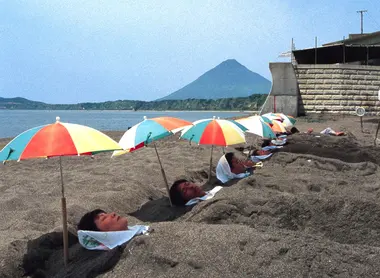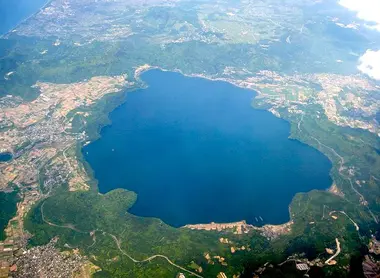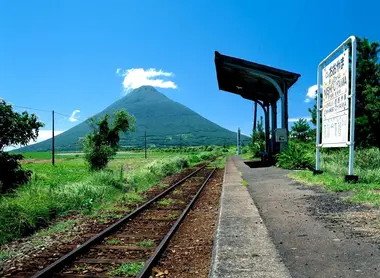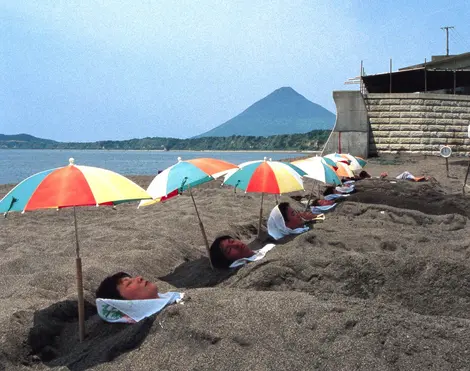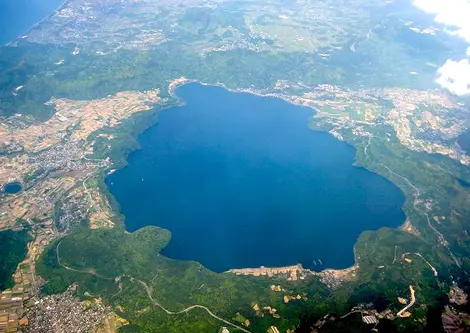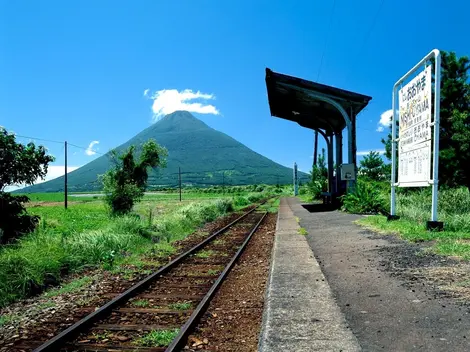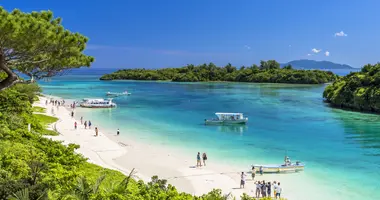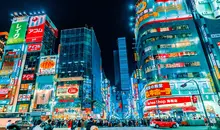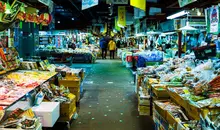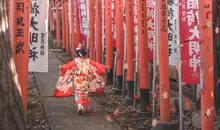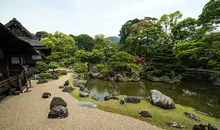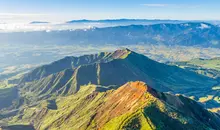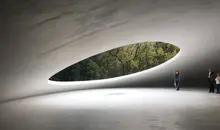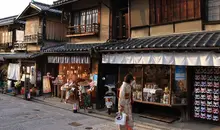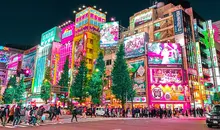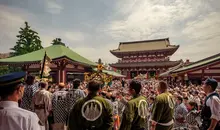Ibusuki Kagoshima: discover the thermal jewel of southern Japan
- Published on : 01/10/2014
- by : G.L.
- Youtube
Feel the hot sand
Nestled on the southernmost tip of the island of Kyushu, Ibusuki is a unique destination, seducing visitors with its singular thermalism and impressive volcanic landscapes. This small town in Kagoshima Prefecture, located on the Satsuma Peninsula, is world-famous for its therapeutic black sand baths. With its mild subtropical climate (19°C annual average), Ibusuki offers travellers a subtle blend of thermal relaxation, natural beauty and preserved cultural traditions. Set between sea and mountains, this seaside resort with its slightly old-fashioned charm invites you to enjoy an authentic Japanese experience, far from the conventional tourist trails.
Where is Ibusuki and how do I get there?
Ibusuki is located in the far south of Kyushu, on the southern tip of the Satsuma Peninsula, in Kagoshima Prefecture. This coastal town lies at the entrance to Kagoshima Bay, with a breathtaking view of Mount Kaimon to the west. According to official data, Ibusuki had a population of around 38,189 in June 2021, spread over an area of 148.84 km².
There are several options for reaching Ibusuki from major Japanese cities. If you're coming from Tokyo or Osaka, the quickest way is to fly to Fukuoka airport, then continue by train. From Fukuoka, take the Kyushu Shinkansen to Kagoshima-Chuo station, then the JR Ibusuki-Makurazaki line to Ibusuki. The total journey from Fukuoka takes around 2h50 and costs 10,470 yen (fully covered by the Japan Rail Pass).
From Kagoshima, rail connections are frequent and convenient. You can choose between a Limited Express train for a 50-minute journey or a local train for a journey of around 1h20. For a more picturesque experience, opt for the "Ibusuki no Tamatebako" theme train, a limited express train with an all-wood interior that operates three times a day (departures from Kagoshima at 09:58, 11:57 and 14:02). This train offers special seats on the left-hand side, like a counter facing the windows overlooking Kagoshima Bay.
Once there, several bus lines serve the region's main points of interest. Attractive passes allow unlimited use of the buses for 1 or 2 days (1100 yen and 2200 yen respectively). Renting a car can also be an interesting option for exploring the surrounding area on your own.
Therapeutic sand baths (sunamushi): a unique spa experience
Ibusuki's main attraction is undoubtedly its famous black sand baths, heated naturally by underground volcanic springs. This practice, known as "sunamushi onsen" (砂むし温泉) or more simply "sunaburo" (砂風呂), has been around for over 300 years and is a unique thermal experience in Japan.
The process is simple but fascinating: dressed in a yukata (lightweight kimono) provided by the establishment, you lie down in a pit dug into the black sand of the beach. An employee then covers you up to the neck in warm sand, revealing only your head. The sand, naturally heated to a temperature of around 50-55°C by underground thermal springs, envelops your body in gentle yet intense warmth.
The therapeutic benefits of these baths are numerous and reputed to be up to three to four times more effective than those of conventional onsen. The hot sand encourages profuse sweating, which helps to eliminate toxins, improve blood circulation and relieve joint pain and respiratory problems. This natural therapy acts like a sauna, accelerating the metabolism and providing a sensation of deep purification. A 10-15 minute session is usually enough to feel the beneficial effects, although some prefer to linger longer.
Several establishments offer this experience in Ibusuki. Sunamushi Onsen Sayuri is one of the most popular, as is the Sunamushi Onsen public bath on Sugirahama beach. The complete process usually includes a sand bath followed by a traditional onsen to rinse off and prolong relaxation. The experience costs around 1,500 yen (€10) and generally includes yukata rental, access to the baths and towels. Please note, however, that this practice is not recommended for people with heart problems or pregnant women, due to the intense heat.
Mount Kaimon: Ibusuki's emblematic "Satsuma Fuji
Majestically dominating the Ibusuki landscape, Mount Kaimon (開聞岳, Kaimon-dake) is a dormant volcano rising to 924 meters above sea level. Its perfect conical shape has earned it the nickname "Satsuma Fuji", in reference to its striking resemblance to the famous Mount Fuji. The volcano is an iconic landmark of the region, with a spectacular silhouette visible from many parts of Ibusuki.
For hiking enthusiasts, climbing Mount Kaimon is a must. The trail begins at Kaimon Furiai Park, accessible by car or on foot from Yamakawa station (30-40 minute walk). The climb takes around 2h30, although fit hikers can complete it in less than two hours. The trail first passes through a subtropical forest of thick green foliage and impressively rooted trees, reminiscent of the landscape on Yakushima Island. The higher you go, the more the path becomes a climb, requiring good hiking boots.
Once at the top, the panoramic view is breathtaking. On a clear day, you can see the entire southern tip of the Satsuma Peninsula, from the west coast to Cape Nagasakibana. On a particularly clear day, you can even see Yakushima and the Osumi Peninsula in the distance. This spectacular view is well worth the two-hour climb!
If you prefer to admire Mount Kaimon without climbing it, head for Nishi-Oyama station, reputed to be the southernmost JR station in Japan. It offers a breathtaking view of the volcano and is itself a tourist attraction. Nearby, you'll find a yellow mailbox considered a good luck charm - feel free to drop your postcards there after making a wish.
Lakes, parks and natural attractions to explore
The Ibusuki region is full of natural wonders worth exploring beyond the famous sand baths. Among the most notable is Lake Ikeda (池田湖), Kyushu's largest crater lake. Located about 30 minutes by bus from the center of Ibusuki, this crystal-clear lake is surrounded by lush vegetation. It is particularly famous for being home to enormous eels up to 2 metres long. Local legend even has it that a monster nicknamed "Issie" (Japanese cousin of the Loch Ness monster) resides here. In spring, the rapeseed flowers that line the lake are a particularly photogenic sight.
Another lesser-known but equally enchanting natural gem is Lake Unagi, located in the small spa village of Unagi Onsen. This lake, the remnant of a volcanic crater, is surrounded by a hamlet where columns of steam rise from the ground. The village is unique in that it has natural "woks" (sume スメ) where locals can cook their food with geothermal steam. A stroll through this timeless village offers a fascinating insight into daily life in a region strongly marked by volcanic activity.
Botany enthusiasts will love Kagoshima Floral Park, a vast 36.5-hectare area home to some 2,400 species of tropical and subtropical plants and flowers. Not only does this park offer a magnificent panorama of the coastline, it also provides an opportunity to discover an impressive variety of plant life in an unspoilt natural setting.
To make the most of the seaside, head for Cape Nagasakibana, the western tip of Kagoshima. The path leading to the lighthouse passes by the Ryugu shrine and provides access to a black sand beach with amazing properties: unlike ordinary sand, it doesn't stick to the skin! There are also two flower parks nearby: Flower Park Kagoshima and the Nagasakihana Parking Garden, although the latter is less well maintained.
Cultural heritage and local culinary specialties
Ibusuki and the surrounding area offer a rich cultural heritage that bears witness to the fascinating history of Kagoshima, formerly known as Satsuma. For history buffs, a visit to the Satsuma Denshokan Museum is a must. Located on the grounds of the Hakusuikan Hotel, this museum traces local history, with a particular focus on Satsuma ceramics, an intricately decorated style of pottery that enjoyed great success in Europe in the late 19th century. The pieces on display testify to the exceptional skills of the region's craftsmen.
Not far from Ibusuki, in the nearby town of Chiran, you can discover perfectly preserved old samurai houses and a museum dedicated to kamikazes, offering a poignant look at this dark page in Japanese history. These sites help visitors to better understand the important role the region has played in Japan's history.
The local gastronomy also deserves your full attention. Among the must-try specialties is "satsuma-age", a fried fish cake originating from Kagoshima. This dish, which dates back to the Edo period (1603-1868), is prepared from a mixture of minced fish (sardines, sharks, bonito, mackerel...) bound with flour and starch, then seasoned with salt, sugar and soy sauce. Sometimes enriched with vegetables, this mixture is transformed into small dumplings or cakes before being deep-fried to a golden color.
Another unique culinary experience is nagashi somen noodles at the Tosenkyo Somen Nagashi restaurant. At this restaurant, the thin wheat noodles circulate in a circular container in the middle of your table, carried by a stream of water. The challenge is to catch them with your chopsticks before they slip away - an exercise in skill that adds a playful dimension to the meal!
Fresh fish lovers won't want to miss the local katsuo (bonito), often served raw with mayonnaise according to regional custom, as well as "kibinago" (blue sprat), a small silver-striped herring usually served as sashimi with a spicy sauce. These specialties can be enjoyed in small fishermen's restaurants like Mugen, where you can savor an authentic "fisherman's lunch" (魚師めし).
The mysterious island of Chiringashima and other special features
Just a few kilometers off the coast of Ibusuki lies the enigmatic island of Chiringashima, a destination that adds a magical touch to your stay. What makes this small island so special is the natural phenomenon that occurs here: only from October to March, and only for a few hours a day during low tides, a thin strip of sand emerges from the ocean, creating a walkable path between the peninsula and the island.
This temporary natural footbridge, nicknamed "Moses' Path", attracts many visitors who carefully plan their visit according to the tide timetable. The crossing to Chiringashima is considered particularly romantic in local culture, making the island a favorite meeting place for couples. Once on the island, you can enjoy its unspoilt nature and breathtaking views of the surrounding sea and the Ibusuki coast with Mount Kaimon in the background.
Among other local sights, don't miss the ancient Ibusuki salt marshes, located on the cliff above the sandy baths. Salt was once produced here thanks to geothermal activity. Today, you can still see the basins, the accumulation of salt over the years, and above all the impressive pipes that captured the steam, forming veritable fountains of smoke - a sight as aesthetic as it is instructive on the traditional techniques of exploiting geothermal resources.
Another special feature of Ibusuki lies in the realm of popular culture: since February 2019, the town has appointed Evoli, the famous Pokémon, as its official tourism ambassador. As you stroll through the streets, you'll spot special manhole covers bearing the effigy of each of Evoli's nine known evolutions - an original initiative that attracts fans from all over the world and testifies to Japan's ability to marry tradition and pop culture.
For a more spiritual experience, head to the Kamafuta Shrine in nearby Minami-Kyushu. This unique shrine offers an unusual challenge: walk from the entrance to the prayer area with a Japanese pot lid (kamafuta 釜蓋) on your head, without touching it to put it back on if it slips. Successful completion of this challenge is supposed to bring victory and harmony to a couple's relationship.
Where to stay and when to visit Ibusuki
Ibusuki offers a wide range of accommodation options, but for an authentic experience, nothing beats a stay in one of the town's many ryokans (traditional Japanese inns), most of which are equipped with their own onsen. These establishments generally offer rooms with tatami mats, traditional futons and sometimes a breathtaking view of the sea or Mount Kaimon.
Among the most highly recommended establishments is theIbusuki Syusui-en, a chic Japanese-style ryokan with spacious natural hot spring baths and a sand foot bath. Guests particularly praise its magnificent rooms, attentive staff and gourmet meals. Hana no Onsen, Hotel Ginsyo is also popular for its baths overlooking the city and mountains, as well as for its excellent breakfast, including an individual onsen where your tofu is cooked.
For those who prefer more modern accommodations, theIbusuki Phoenix offers "Sunamushi" sand baths and relaxing massages, all with the comforts of a grand hotel. Another interesting choice is the seafrontIseebisou, which offers extraordinary views of Mount Kaimon from its rooms and delicious meals based on freshly caught seafood.
As for the best time to visit Ibusuki, the town enjoys a subtropical climate with an average annual temperature of 19°C, making it a pleasant destination all year round. However, summer can be extremely hot and humid, making outdoor activities less comfortable. Autumn (September to November) and spring (March to May) offer mild temperatures and generally sunny weather, ideal for sand bathing and hiking.
If you'd like to visit Chiringashima Island via the sand path, remember that this phenomenon can only be observed from October to March during low tide. Winter is also a good time to enjoy the hot springs, as the contrast between the cool air and the warmth of the baths is particularly pleasant. Note that during the New Year vacations and the Obon period in August, tourist sites can be more crowded with Japanese visitors.
Whichever season you choose, Ibusuki offers you an authentic experience off the beaten track, allowing you to discover a quieter, more thermal side of Japan, while immersing yourself in the spectacular volcanic landscapes and rich culture of the Kirishima-yaku National Park region.
Address, timetable & access
Address
Access
From Kagoshima: JR Ibusuki-Makurazaki train (1h-1h30) or Ibusuki-Chiran bus (from Kagoshima Chûô station),
toppy hydrofoil from Dolphin Port
